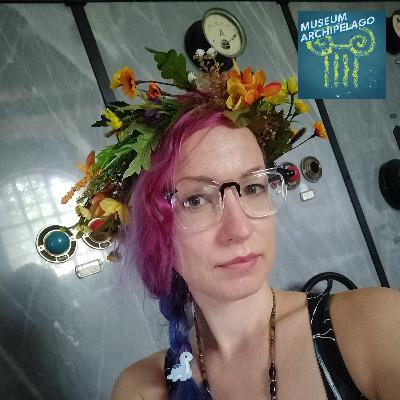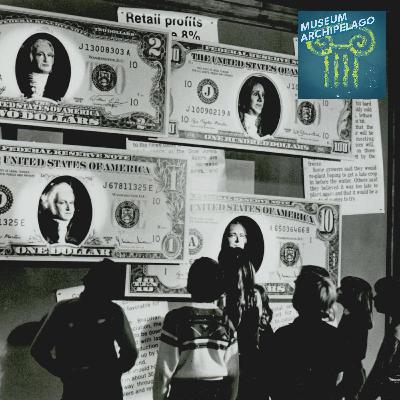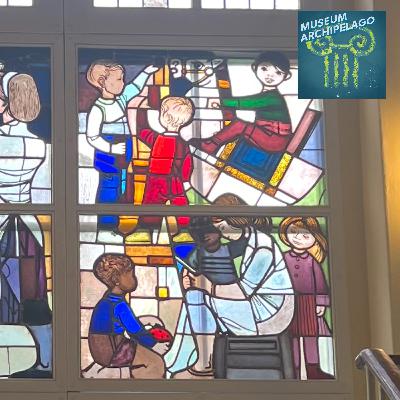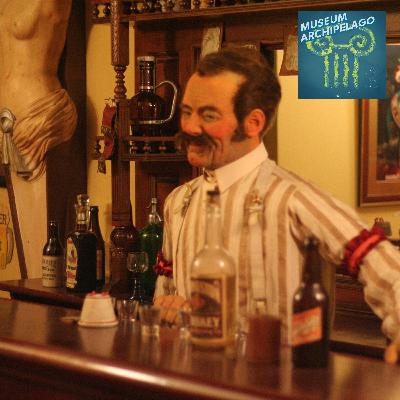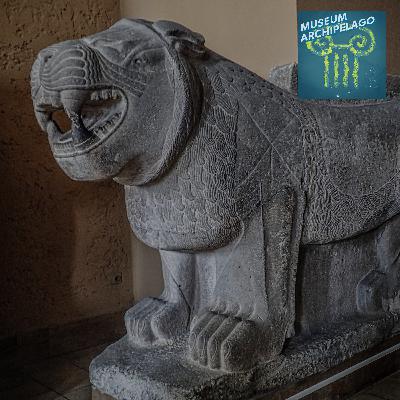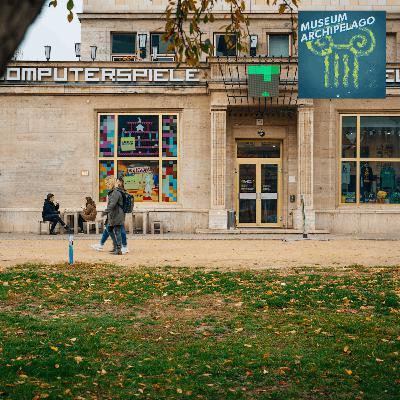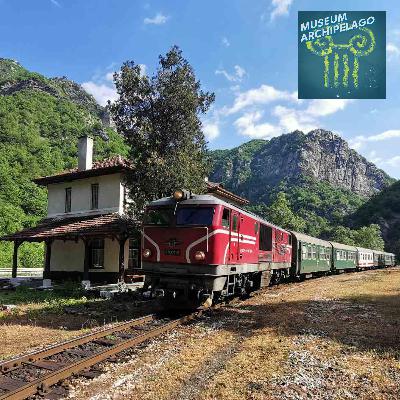95. The Museum of Technology in Helsinki, Finland Knows Even the Most Futuristic Technology Will One Day Be History
Description
In 1969, noticing that technological progress was changing their fields, heads of Finish industry came together to found a technology museum in Finland. Today, the Museum of Technology in Helsinki is the only general technological museum in the country.
But of course, technical progress didn’t stop changing, as service coordinator Maddie Hentunen notes, and that can be challenging for a museum to keep up.
In this episode, Hentunen describes the museum’s philosophical stance on technology, how the museum balances industrial development with more open source design practices, and how the museum thinks about its own obsolescence.
Topics and Notes
- 00:00 Intro
- 00:15 1969 in Technology
- 00:49 Maddie Hentunen
- 01:02 The Museum of Technology in Helsinki, Finland
- 02:34 The Museum’s Building
- 03:51 Original Exhibits
- 04:50 Today’s Exhibits
- 07:07 The Museum’s Philosophical Stance on Technology
- 10:29 Outro | Join Club Archipelago 🏖
Museum Archipelago is a tiny show guiding you through the rocky landscape of museums. Subscribe to the podcast via Apple Podcasts, Google Podcasts, Overcast, Spotify, or even email to never miss an episode.
Unlock Club Archipelago 🏖️
- Access to a private podcast that guides you further behind the scenes of museums. Hear interviews, observations, and reviews that don’t make it into the main show;
- Archipelago at the Movies 🎟️, a bonus bad-movie podcast exclusively featuring movies that take place at museums;
- Logo stickers, pins and other extras, mailed straight to your door;
- A warm feeling knowing you’re supporting the podcast.
Transcript
Below is a transcript of Museum Archipelago episode 95. For more information on the people and ideas in the episode, refer to the links above.
<input class="toggle" id="collapsible" type="checkbox" />
<label class="lbl-toggle" for="collapsible">View Transcript</label>
Ian Elsner: Welcome to Museum Archipelago. I'm Ian Elsner. Museum Archipelago guides you through the rocky landscape of museums. Each episode is never longer than 15 minutes, so let's get started.
Ian Elsner: 1969 was a banner year for technological advancement: for one, it’s the year humans first walked on the moon. It was also -- and this is not unrelated to technological advancement -- right in the middle of the Cold War.
Maddie Hentunen: 1969 in Finland was kind of a fraught time politically in a way that it was still the era of the cold war and we're right next to Russia.
Maddie Hentunen: So our political relationship with Russia has always been kind of a tightrope. We've always gazed eastwords with care and especially at that time.
Ian Elsner: This is Maddie Hentunen, service coordinator at the Museum of Technology in Helsinki, Finland.
Maddie Hentunen: Hello. My name is Maddie Hentunen, and right now I am the service coordinator here in the museum of technology in Helsinki, Finland.
Ian Elsnsr: The museum of technology was founded in that banner year of 1969 by heads of Finish industries. The idea was to make a general technology museum in Finland. The point is that it’s not siloed by industrial sector.
Maddie Hentunen: I think at that point, the global sort of Zeitgeist, the technology of the time was taking massive leaps forward. So at that time there were these, let's say there was a coalition in a very loose meaning of the word of these gigantic, in Finish scale, gigantic, industry had sort of, let's say, the forest industry, which in Finland has always been massive And then there was the metal industry, which includes the mining industry and, and the chemistry industry thinks like this, who felt the need for some kind of preservation because they started to, in their respective fields, notice that things are changing. And a lot of the old sort of wisdom, a lot of the old ways are gone. Pull it behind us in the past.
Maddie Hentunen: I feel that is very unique in a way or very, nice in that sense is that they actually came together and made that decision that we will make this sort of generalized museum of technology instead of making a forestry technical museum or a chemistry museum or stuff like that. It was a cooperative mission, so to speak. So that's actually how first our collection started to build. We've got these big donations from different fields, industrial fields that are still big parts of our collections.
Ian Elsner: The newly-founded museum decided it would use Finland’s first water purification plant -- built in 1877 -- as its main exhibit building -- it’s a delightfully squat round building that used to be filled with sand that the water filtered through -- water that would eventually be used for drinking or firefighting.
Maddie Hentunen: Helsinki started to grow pretty fast after the 1850s or so. So after that there was a real need for purified water. And, also, because the city was mostly built of wood. So also the fire security was a big question. But yeah, basically this is a giant round building, which was filled with water and sand. This place of course is very much part of the Finish industrial history. So it was like the perfect place, because at that point in the 1960s, when it turned into 1970s and when then this plant was closed down and it and the space was empty.
Maddie Hentunen: One of the most common things that people say when they walk in that door, they say, oh, it's bigger on the inside! I was a Doctor Who fan and I sort of got the TARDIS-like feel when I came in.
Ian Elsner: In this building, the museum first opened to the public in 1985, and some of these original exhibits were still being displayed until fairly recently.
Maddie Hentunen: Back then it was a very different museum. There was still a lot of the old museum thinking sort of like straggling. One of the 1985 exhibitions, the old communication exhibition, was still here, I think, five years ago. So it had a really long sort of shelf life that exhibition. And you could very clearly see that it was from a very different time that it was filled with artifacts. It was filled with stuff. And also the text were like super long, unreadable mostly, only in one language, which was Finnish at that time.
Maddie Hentunen: It was not very approachable. It was really cool to just look at things, but it was not super informative. You had to sort of guess what is this? And then there was those wall of texts somewhere, and you thought you had to go and find to be able to connect the artifact with the text. As we know, then the whole museum thinking around exhibitions has changed drastically.
Ian Elsner: Today, with the new exhibits, the museum features much shorter informative text in three languages: Finnish, Swedish, and English. As the Finnish industry has changed, so have the exhibits: giant machines used for forestry and mining share the open, circular space with tiny cell phones made by the Finnish firm Nokia and interactive touchscreen exhibits that teach the basics of computer programming.
Ian Elsner: Visiting the museum in 2021, the Nokia cell phones look impossibly out of date -- in the way that history tends to compress itself, a phone from 15 years ago looks almost contemporaneous to a TV camera from 50 years ago. But it wasn’t that long ago, before the arrival of the iPhone, that it seemed like Nokia phones -- proudly designed in Finland -- would continue to be ubiquitous.
Maddie Hentunen: Maddie Hentunen: Everybody had a Nokia phone at some point and that all the movies were. I remember when The Matrix came out and they had, they had their, their phones and everything that it was like, it was everywhere. And I think we're sort of still in that mind frame, even though Nokia has kind of declined from that.
Ian Elsner: But the way the museum approaches the gulf between past, current, and future technology is fascinating -- the museum knows that even the most futuristic technology will one day be history.
Maddie Hentunen: The past, the present and the future are all equally important. I think the Museum of Technology is in a special position in that sense, that technology changes so incredibly fast right now and has been doing that for the past 100 years or so, in F

